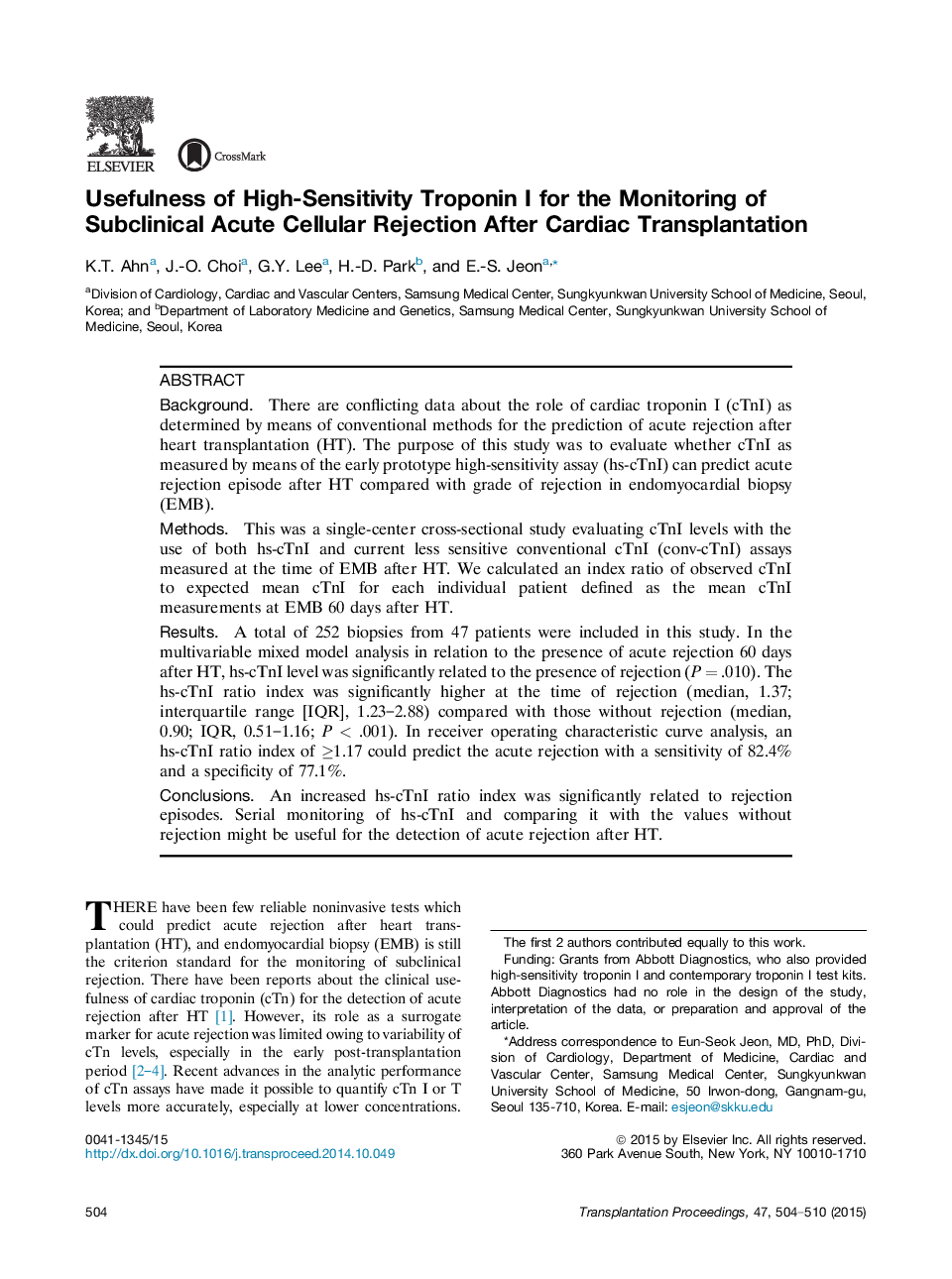| Article ID | Journal | Published Year | Pages | File Type |
|---|---|---|---|---|
| 4257634 | Transplantation Proceedings | 2015 | 7 Pages |
•There are conflicting data of cardiac troponin I by conventional method for the prediction of acute rejection after heart transplantation.•An index ratio of observed hs-cTnI to expected mean hs-cTnI for each individual patient defined by the mean hs-cTnI measurements at 60 days post-HTx can predict acute rejection episode after heart transplantation.•Hs-cTnI ratio index of ≥1.17 could predict the acute rejection with a sensitivity of 82.4% and a specificity of 77.1%.
BackgroundThere are conflicting data about the role of cardiac troponin I (cTnI) as determined by means of conventional methods for the prediction of acute rejection after heart transplantation (HT). The purpose of this study was to evaluate whether cTnI as measured by means of the early prototype high-sensitivity assay (hs-cTnI) can predict acute rejection episode after HT compared with grade of rejection in endomyocardial biopsy (EMB).MethodsThis was a single-center cross-sectional study evaluating cTnI levels with the use of both hs-cTnI and current less sensitive conventional cTnI (conv-cTnI) assays measured at the time of EMB after HT. We calculated an index ratio of observed cTnI to expected mean cTnI for each individual patient defined as the mean cTnI measurements at EMB 60 days after HT.ResultsA total of 252 biopsies from 47 patients were included in this study. In the multivariable mixed model analysis in relation to the presence of acute rejection 60 days after HT, hs-cTnI level was significantly related to the presence of rejection (P = .010). The hs-cTnI ratio index was significantly higher at the time of rejection (median, 1.37; interquartile range [IQR], 1.23–2.88) compared with those without rejection (median, 0.90; IQR, 0.51–1.16; P < .001). In receiver operating characteristic curve analysis, an hs-cTnI ratio index of ≥1.17 could predict the acute rejection with a sensitivity of 82.4% and a specificity of 77.1%.ConclusionsAn increased hs-cTnI ratio index was significantly related to rejection episodes. Serial monitoring of hs-cTnI and comparing it with the values without rejection might be useful for the detection of acute rejection after HT.
